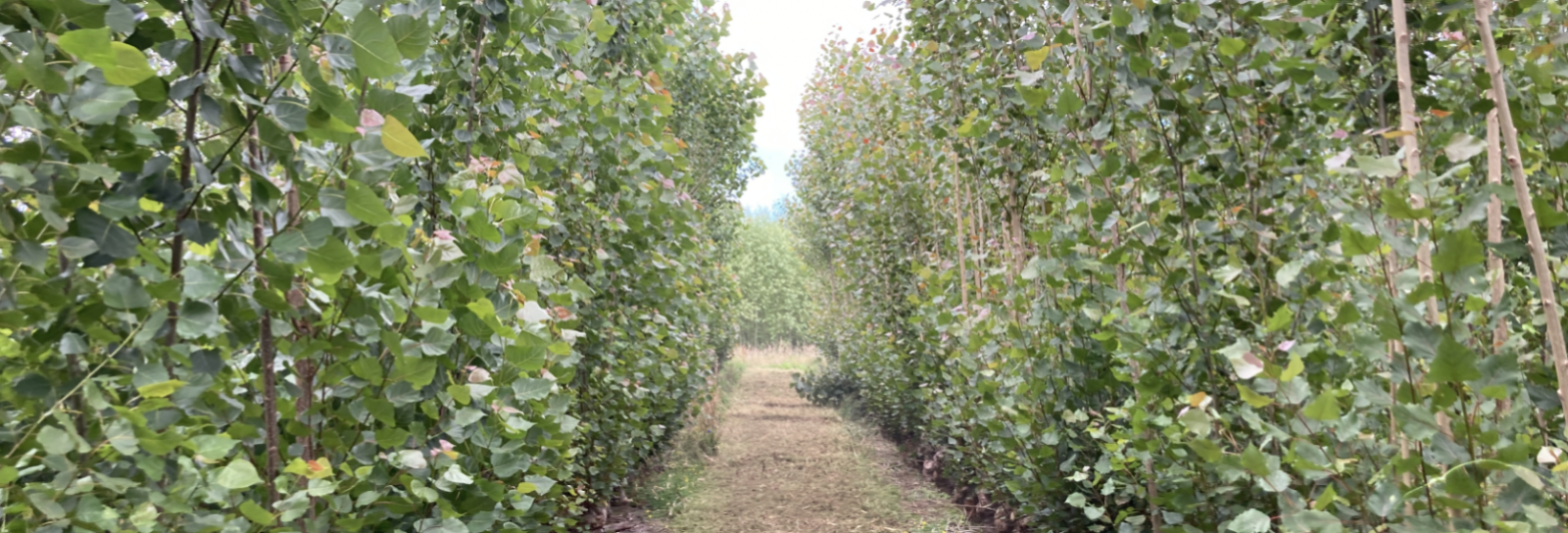28 February 2022.
Poplar and Willow - which variety is right for your farm?
Council’s Waerenga-o-kuri soil conservation nursery has been producing poplar and willow poles for the district’s landowners for over 20 years, as well as being a trial ground for new varieties. Summer is the time to start planning your winter conservation tree planting requirements.
Below is a description of the characteristics of our most popular varieties of willow and poplar from Plant and Food Research. These species have been successfully planted around the Gisborne hills for many years and are well suited to our climate and conditions.
If you have any specific questions around what may be the most suitable species for your farm, please do not hesitate to get in touch with Council’s Integrated Catchments team integrated.catchments@gdc.govt.nz
Tree Willows
Moutere
Has blue-green foliage and the crown is quite dense and reasonably narrow. Its stem form is usually straight. Foliage is retained until early June. It is suitable for shelter and for general soil conservation planting. This clone has proved to be superior on windy sites. ‘Moutere’ is male. It is fast growing, good for wetter sites and riparian planting.
Tangoio
Selected specifically for farm soil conservation and horticultural shelter. It has high wind tolerance and very good lower branch retention. It has a wider crown than ‘Moutere’ and light green leaves. It is a female clone, so should not be planted where seedling establishment could be a problem. ‘Tangoio’ has an excellent root to shoot ratio and is ideal for slope and gully erosion control. It is relatively dry-tolerant. ‘Tangoio’ is ideal for pollarding since it produces many stems and foliage.
Hiwinui
More suitable for general soil conservation planting than for shelterbelts. It is male, with bluish green leaves, a rather spreading crown, and is vigorous. The lower branches tend to hang down.
Poplar
Veronese (P.deltoides x nigra)
Veronese is an imported P. x euramericana hybrid black poplar, and is a straight stemmed, narrow crowned tree. It has good drought and wind tolerance. Veronese makes a good conservation tree where minimal shade is required. It is prone to rust in areas of high humidity and heavy dews in western areas
Crowsnest (P. x euramericana x nigra)
Crowsnest is a smaller growing tree with upright branches that do get heavier with age. It can be used as a conservation tree particularly in eastern drier regions where minimal shade is required. It is suited to horticultural shelter as the stems are lighter than Tasman and require little side trimming.
Kawa (P. deltoides x yunnanensis)
Kawa is an excellent conservation tree on moist slopes that don’t get excessive wind. New leaf emerges late September with greenish/bronze leaves. Kawa is one of the densest poplars at up to 360kg per cubic metre making it the leading timber producing poplar. Kawa keeps its foliage longer than the x euamericana hybrids, and has stunning autumn colouration.
If you would like to place an order for poplar and willow poles for winter 2022, please fill out our order form online;
(Note- prices subject to change)
More information
The above descriptions were taken from the following publications. More information on all Poplar and Willow varieties grown in New Zealand can be found here;
- Plant & Food Research, & McIvor, I. (2011). Poplars for the Farm (No.5). Plant & Food Research. https://www.poplarandwillow.org.nz/documents/brochure-5-poplars-for-the-farm.pdf
- Plant & Food Research, & McIvor, I. (2013). Willows for the Farm (No.1). Plant & Food Research. https://www.poplarandwillow.org.nz/documents/brochure-1-willows-for-the-farm.pdf
